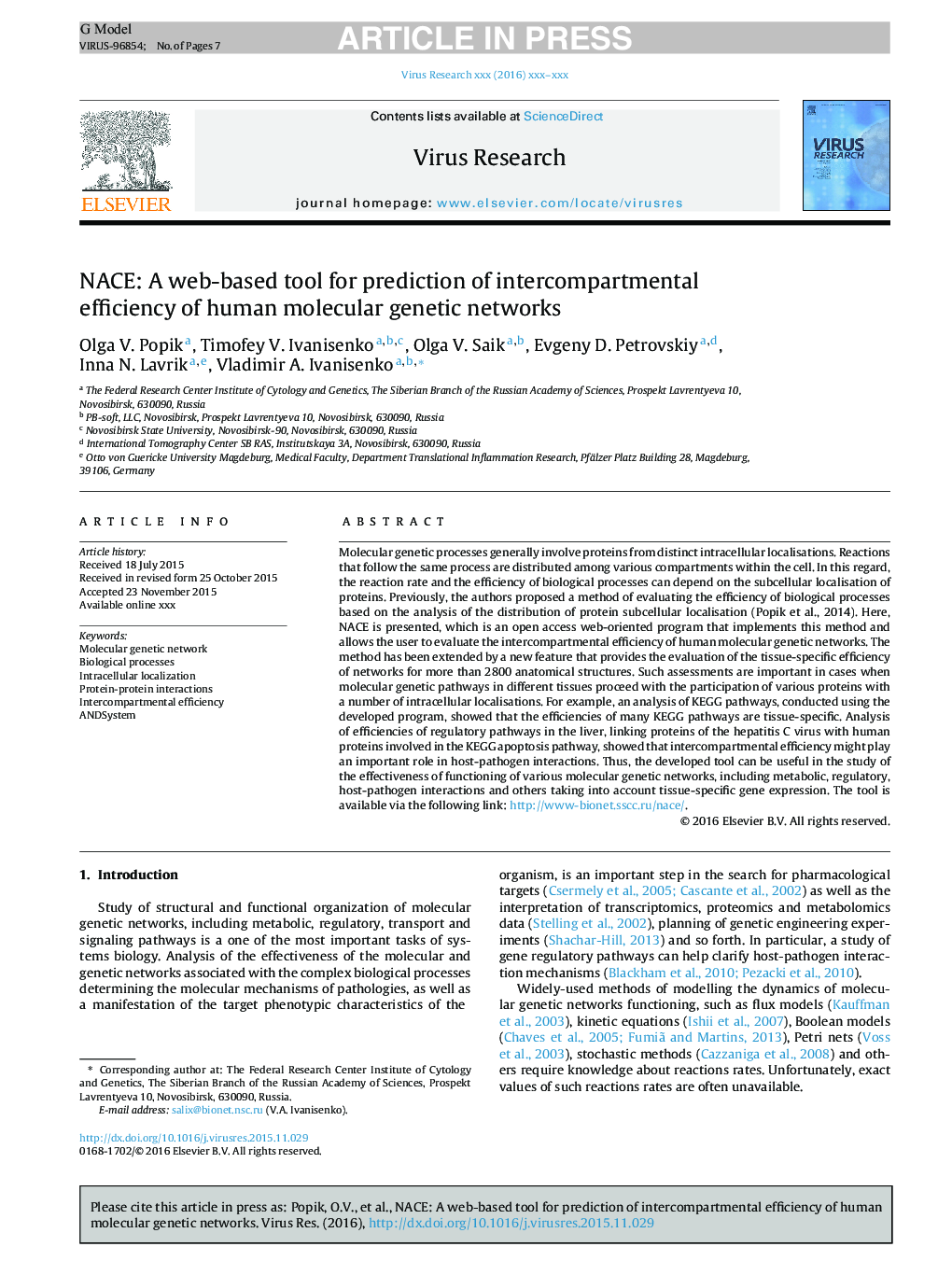| Article ID | Journal | Published Year | Pages | File Type |
|---|---|---|---|---|
| 6142115 | Virus Research | 2016 | 7 Pages |
Abstract
Molecular genetic processes generally involve proteins from distinct intracellular localisations. Reactions that follow the same process are distributed among various compartments within the cell. In this regard, the reaction rate and the efficiency of biological processes can depend on the subcellular localisation of proteins. Previously, the authors proposed a method of evaluating the efficiency of biological processes based on the analysis of the distribution of protein subcellular localisation (Popik et al., 2014). Here, NACE is presented, which is an open access web-oriented program that implements this method and allows the user to evaluate the intercompartmental efficiency of human molecular genetic networks. The method has been extended by a new feature that provides the evaluation of the tissue-specific efficiency of networks for more than 2800 anatomical structures. Such assessments are important in cases when molecular genetic pathways in different tissues proceed with the participation of various proteins with a number of intracellular localisations. For example, an analysis of KEGG pathways, conducted using the developed program, showed that the efficiencies of many KEGG pathways are tissue-specific. Analysis of efficiencies of regulatory pathways in the liver, linking proteins of the hepatitis C virus with human proteins involved in the KEGG apoptosis pathway, showed that intercompartmental efficiency might play an important role in host-pathogen interactions. Thus, the developed tool can be useful in the study of the effectiveness of functioning of various molecular genetic networks, including metabolic, regulatory, host-pathogen interactions and others taking into account tissue-specific gene expression. The tool is available via the following link: http://www-bionet.sscc.ru/nace/.
Related Topics
Life Sciences
Immunology and Microbiology
Virology
Authors
Olga V. Popik, Timofey V. Ivanisenko, Olga V. Saik, Evgeny D. Petrovskiy, Inna N. Lavrik, Vladimir A. Ivanisenko,
